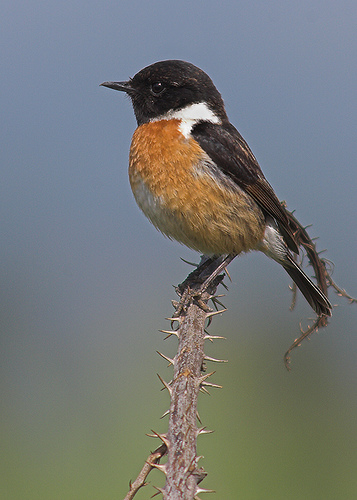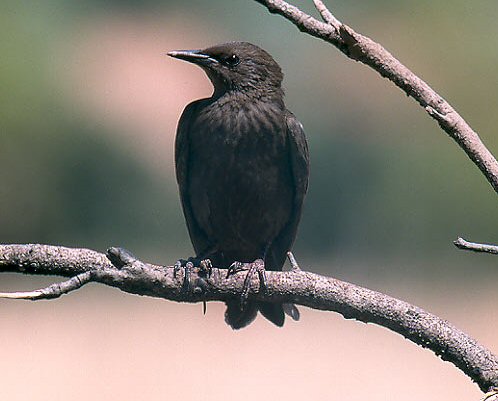Birding in Sierra the Aire e Candeeiros
This activity is one of my main and favourable.
The first step after arrival in another region is becoming familiar with the presence of other types of common birds.
I´m supposed to make a registration of common birds all the year around. The birdcensus is sent to SPEA (Sociedade Portuguesa de Estudo das Aves).
A typical example of a common bird in this habitat is the Sylvia Undata, producing a remarkable metalic sound. This bird is only present in Provence (France), Portugal & parts of Spain or Serbia, Albania and the south of the balcan
Another typical one is the Sylvia Atricapilla, recognizable by the black cap.


Another typical bird is the Carduelis Carduelis, characterised by a red spot around the beak. It likes thorns ..
 Typical , scarce in the country where I was born is the Saxicola Torquata Rubicola, having a completely black head and orange belly with a white stripe in the throat.
Typical , scarce in the country where I was born is the Saxicola Torquata Rubicola, having a completely black head and orange belly with a white stripe in the throat.


The phoenichurus ochrurus is a typical bird and you can mismatch because of the remarkable red tale in combination with a completely black appearance. The sounds is recognisable by a variety between high 'fwiet' and a lower 'takkk '.
The european canary or Serinus Serinus can be present in trees near stonewalls, until know I only spot one time this bird.

In clusters in the field it's possible to encounter the Carduelis Spinus , near thorns or vegetation typical for this dry habitat in the serra. Often, confusion occurs with Serinus Serinus.


Another type of bird who can be in open fields is the southern variation of the sturnus vulgaris, the sturnus unicolor.

Some common pigeon we can find here is the turkish pigeon.

A bird I've started seeing since february is Emberiza Cirla. I talk about a bird with a yellow-orange head and black stripe.


The Jynckx Torquila is like a woodpecker, but his colors are less significant, light brown feathers together with several black stripes. The sound is similiar to the green woodpecker, but only 4 times 'Kju Kju Kju Kju'.




Until now, only one time I have registrated the Elanus Caeruleus.
Eagles or vultures are extremely scarse.
This activity is one of my main and favourable.
The first step after arrival in another region is becoming familiar with the presence of other types of common birds.
1 Common birds census
I´m supposed to make a registration of common birds all the year around. The birdcensus is sent to SPEA (Sociedade Portuguesa de Estudo das Aves).
- Hedges, stonewalls and open fields
A typical example of a common bird in this habitat is the Sylvia Undata, producing a remarkable metalic sound. This bird is only present in Provence (France), Portugal & parts of Spain or Serbia, Albania and the south of the balcan
Another typical one is the Sylvia Atricapilla, recognizable by the black cap.

Confusing appears often because of the Sylvia Melanocephalo. The throat is more pale and the black cap is covering also a part under the eyes.


(own picture)

I have to admit that many mistakes are made because the appearence of the Saxicola Rubetra is similiar, allthough this bird's head is not completely dark (of the male) but brown-black with a white horizontal stripe around the eye.
The european canary or Serinus Serinus can be present in trees near stonewalls, until know I only spot one time this bird.
In clusters in the field it's possible to encounter the Carduelis Spinus , near thorns or vegetation typical for this dry habitat in the serra. Often, confusion occurs with Serinus Serinus.
More exceptional. The upupa epops is a beuatiful bird but his territory has only borders with this P.N.S.A.C., some kilometers more northwards you can't spot him the whole year. It's remarkable this kind of appearance.

Another type of bird who can be in open fields is the southern variation of the sturnus vulgaris, the sturnus unicolor.

Some common pigeon we can find here is the turkish pigeon.

A bird I've started seeing since february is Emberiza Cirla. I talk about a bird with a yellow-orange head and black stripe.
- Rock formations

Another scarse specie which is typical in this area of the P.N.S.A.C. is the Phyrcorax Phyrcorax. Its appearence is similiar to that of the corvus corone, but the beak is red and curved downwards. THe wings are curved backwards. Its nesting behaviour is unique in the P.N.S.A.C. This specie nests in cave formations, they dive from a high altitude downwards in cave openings. The sound is recognisable, more or less like 'AAUWR AAUWR'.

The Jynckx Torquila is like a woodpecker, but his colors are less significant, light brown feathers together with several black stripes. The sound is similiar to the green woodpecker, but only 4 times 'Kju Kju Kju Kju'.

- Open sky

Daily, when I'm biking / walking to the farm 'Quinta da Cuckoo in Portela Vale Do Espinho' I can spot the buteo buteo or falco tinnunculus.
Also corvus corax can be determined near the stone mines.
2 Migration count
Only 2 times a year, a migration cout is made (october and april). In a first step, SPEA made several quadriculas (100 km2) or tetras (4 km2) in the different districts. I was responsible for district Pombal.
3 ZoneAtlas
This concept is developped by BirdLife International and will be continued in all Europe. Te aim is to make registration in accordance to a predefined scientific protocol in a district of 100 km2.
In a first step, 20 different points with specific habitat should be selected with a travel distance of maximum 10 minutes.
In the second step, the observations must be made during 5 minutes and the points have to be mapped. In every point with description of meteorological conditions.
(map of observation points)








No comments:
Post a Comment